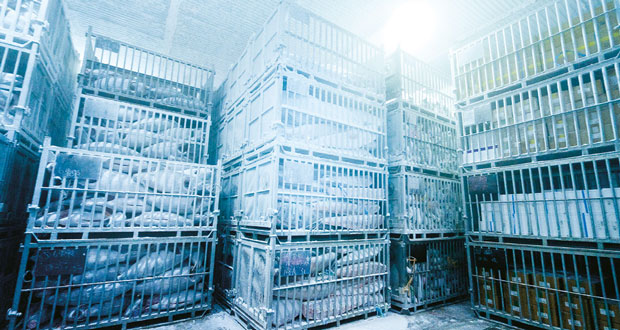 David Bostock, Divisional Director for cooling technologies at Integral explains the cold chain and why it matters
David Bostock, Divisional Director for cooling technologies at Integral explains the cold chain and why it matters
Every facilities manager understands the critical role cooling systems play in their buildings or across their operations, from the air conditioning units keeping occupants comfortable in offices and retail spaces to the refrigerated trucks preserving perishable food on the move. What’s often overlooked, though, is how these systems represent parts of a much larger, interconnected yet invisible infrastructure: the cold chain.
The cold chain is the network of temperature-controlled storage and transport systems that enable the safe delivery of everyday items which keep the world spinning. It links farms to supermarkets, factories to hospitals and warehouses to doorways – relying entirely on the consistent performance of cooling systems at every step.
In 1803, American inventor Thomas Moore patented an insulated icebox designed to keep dairy products cool in transit. It’s come a long way since then. Today, the cold chain is a web of sophisticated technologies that span continents and industries. Modern cooling systems are no longer standalone units – they are integrated into smart infrastructure that allows facilities teams to monitor, adjust and record temperature conditions in real time. From the GPS-enabled refrigerated trucks to sensor-filled cold rooms, every component plays a role in maintaining product integrity and regulatory compliance.
Facilities managers now have access to IoT-enabled sensors, cloud-based monitoring platforms, and AI-powered diagnostics that flag inefficiencies before they lead to failures, help control humidity, detect refrigerant leaks, optimise energy use and track emissions for ESG reporting.
ADDED COMPLEXITY
As global demand for temperature-sensitive goods increases, so too does the pressure on cold chain infrastructure. The Covid-19 pandemic offered a powerful reminder of how critical the cold chain has become. Without it, it would have been impossible to distribute life-saving vaccines quickly and safely across the world.
At the same time, geopolitical change and shifting trade dynamics are adding even more complexity. Brexit introduced new customs checks and transport delays, increasing the risk of temperature breaches in transit. More recently, unpredictable changes to tariffs between different markets and other supply shocks have created further disruption to global cold chain operations.
PRESSURES AND PERFORMANCE
To keep cold chain systems running smoothly, facilities teams must manage a diverse range of cooling infrastructure, including cold rooms, air conditioning, chillers and refrigerated transport – each with their own performance thresholds and points of failure. Whether it’s a single fridge drifting out of range or a delay at the border, even a brief temperature breach can compromise product integrity.
IoT sensors continuously monitor temperature, humidity and other critical conditions in real time, from storage facilities to refrigerated trucks and retail display cases. These sensors provide immediate data, enabling quick detection of any deviations from set parameters that could risk product integrity.
AI-powered diagnostics analyse this vast stream of data to identify patterns, predict equipment failures and flag inefficiencies before they cause breakdowns or cold chain breaches. By spotting early warning signs like unusual temperature fluctuations or abnormal energy usage, AI helps facilities teams prioritise maintenance and respond proactively.
SUSTAINABILITY AND EMISSIONS
Cooling systems are also energy intensive. Emissions from refrigeration account for around 10 per cent of total global carbon output, more than aviation and shipping combined. These emissions fall into two categories: direct emissions, such as refrigerant leakage, and indirect emissions from the electricity used to power equipment.
Direct emissions are especially concerning due to the high global warming potential (GWP) of commonly used refrigerants like hydrofluorocarbons (HFCs). Even small leaks can have a significant climate impact. It’s hugely positive to see our industry shifting to lower-GWP alternatives, including hydrofluoroolefins (HFOs) and natural refrigerants such as ammonia, carbon dioxide (CO₂), and various hydrocarbons. These alternatives often require updated equipment, revised safety protocols, and new training, making the transition complex but necessary.
On the indirect side, organisations can turn to smarter controls, recommission equipment, and improve insulation in cold rooms, pipework, and refrigerated transport. Even small changes, such as using air curtains, ensuring tight door seals, or adjusting set points where it’s safe to do so, can deliver meaningful savings. Facilities teams can also implement staged compressors and chillers, match performance to real-time demand, and use analytics tools to spot waste across large estates.
THE ROAD AHEAD
Cooling has come a long way since the days of the icebox. As demand grows and expectations rise, the cold chain will only become more important. For facilities professionals, that means taking a proactive role in monitoring performance, managing risk, and driving sustainable innovation across the cooling systems that keep the world moving.





